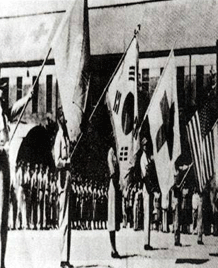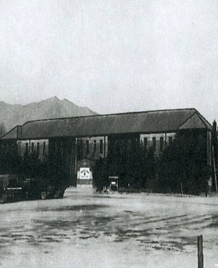 Sweden
Sweden
List for UN Allies
Background of Participation
Sweden informed the UN on July 14, 1950 of its intention to dispatch one field hospital unit to the Korean War when the UN Security Council had decided to provide military support to South Korea. The Swedish Red Cross organized the Field Hospital composed of 160 personnel. On hearing that UN forces defending the Naktong River line lacked medical facilities, the Swedish Red Cross urgently dispatched the Field Hospital.
a arrived in Pusan on September 28th. The Swedish hospital had originally been planned to be attached to the US 8th Army. But as the number of the wounded increased suddenly with UN forces operation of all-out counterattack, the Hospital Unit was committed to the mission of the rear hospital with a capacity of 400 beds in October.
Activity of the Red Cross Hospital
As soon as it opened, the Swedish Red Cross Hospital became full with the soldiers wounded during the Operation of the Inchon Landing and the all-out counterattack operation. The Red Cross Hospital did its best to cure them, and played the role of intermediate base in which the seriously wounded soldiers were given emergency treatment and then sent to Japan by using planes and ships available. At that time, not only South Korean and UNC soldiers, but also workers and North Korean POWs were hospitalized. In addition, there were a number of serious patients who requested the Hospital for orthopedic surgical operations. From June 1951, the Red Cross Hospital came to be concerned with aiding and treating civilians, along with the wounded soldiers. At that time, civilian hospitals in Pusan lacked medical facilities and medicine, as well as professional doctors. Given the situation, the Red Cross Hospital dispatched Swedish nurses to the civilian hospitals. From Autumn, the internal and surgical doctors of the Red Cross Hospital made a round of calls at those civilian hospitals regularly one time per a week, to teach medical arts to South Korean doctors, and to treat civilian patients. They also hospitalized serious patients at the Red Cross Hospital. As the number of civilian patients increased day by day, the Red Cross Hospital opened a clinic for civilians in early May 1952, where 2,100 patients were treated from May to June. Most of these civilian patients were moved to the clinic because they were either seriously ill or unable to be treated in ordinary hospitals. One of the important treatments at the hospital was the inoculation of BCG. At that time, most patients in the Choki Hospital suffered from tuberculosis. The Red Cross Hospital carried out the inoculation of BCG, throughout Pusan by mobilizing all doctors and nurses. The service period of most medical personnel was 6 months, but they usually extended the period to work for more than 1 or 2 years.
Even after the conclusion of the armistice, the hospital continued its mission for one year to treat inpatients. From the end of 1954, the Red Cross Hospital concentrated its effort on treating civilians as the Swedish Red Cross decided to participate in the services of medical support and aid to civilians in order to support the reconstruction of South Korea.
The Swedish Red Cross Hospital had carried out its service for 6 years and 6 months from September 1950 to March 1957. Compared with other medical support units participated in the Korean War, the Swedish hospital stayed in Korea for the longest period, and treated the largest number of serious patients.


